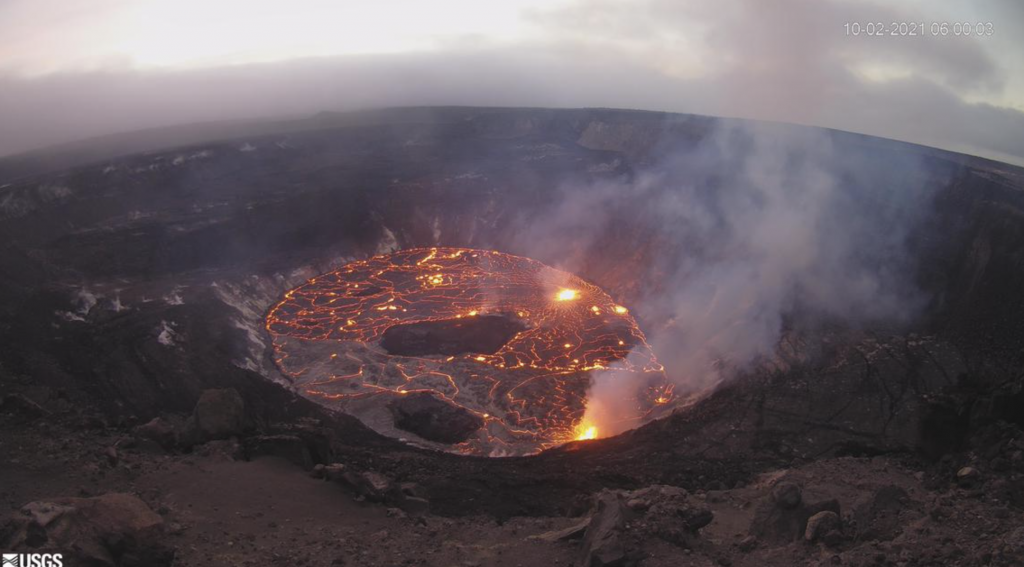Kīlauea Eruption Continues with Multiple Vents Along the Crater Floor

Kīlauea volcano continues to erupt, with multiple active vents along the floor and western wall of Halemaʻumaʻu crater.
The Hawaiian Volcano Observatory reports that as of this morning, Oct. 3, 2021, all lava activity remains confined to Halemaʻumaʻu in Hawai’i Volcanoes National Park.
According to the HVO, Sulfur dioxide (SO2) emission rates remain high and were approximately 14,750 tonnes per day on Oct. 2, 2021, which is higher than the previous day; seismicity is elevated but stable; and summit tiltmeters continue to record deflationary tilt.
“Over the past 24 hours, the lava lake level has risen over 1 meter (3.3 feet). In total, the lava lake surface has risen approximately 27 meters (89 feet) since the eruption started,” the HVO reports. The current eruption started on the afternoon of Sept. 29, 2021.
“The west vent continues to be the most vigorous source, with sustained lava fountain heights of 33-49 feet,” according to HVO reports. “Occasional fountain height bursts have also been observed over the past 24 hours.”
No unusual activity has been noted in the Kīlauea East Rift Zone. The HVO reports that SO2 and hydrogen sulfide (H2S) emissions from Puʻuʻōʻō were below instrumental detection levels when last measured on Jan. 7, 2021.

Hazardous conditions per HVO:
- Large amounts of volcanic gas—primarily water vapor (H2O), carbon dioxide (CO2), and sulfur dioxide (SO2)—are continuously released during eruptions of Kīlauea Volcano. As SO2 is released from the summit, it reacts in the atmosphere to create the visible haze known as vog (volcanic smog) that has been observed downwind of Kīlauea.
- Additional hazards include Pele’s hair and other lightweight volcanic glass fragments from the lava fountains that will fall downwind of the fissure vents and dust the ground within a few hundred meters of the vent s. Strong winds may waft lighter particles to greater distances. Residents should minimize exposure to these volcanic particles, which can cause skin and eye irritation.
- Other significant hazards also remain around Kīlauea caldera from Halemaʻumaʻu crater wall instability, ground cracking, and rockfalls that can be enhanced by earthquakes within the area closed to the public.
“This underscores the extremely hazardous nature of Kīlauea caldera rim surrounding Halemaʻumaʻu crater, an area that has been closed to the public since late 2007,” according to the HVO.










